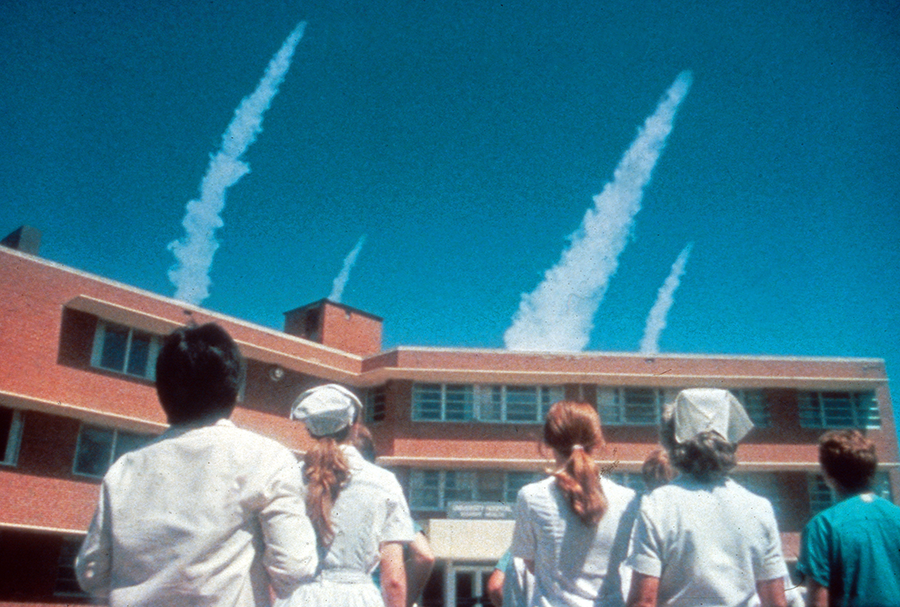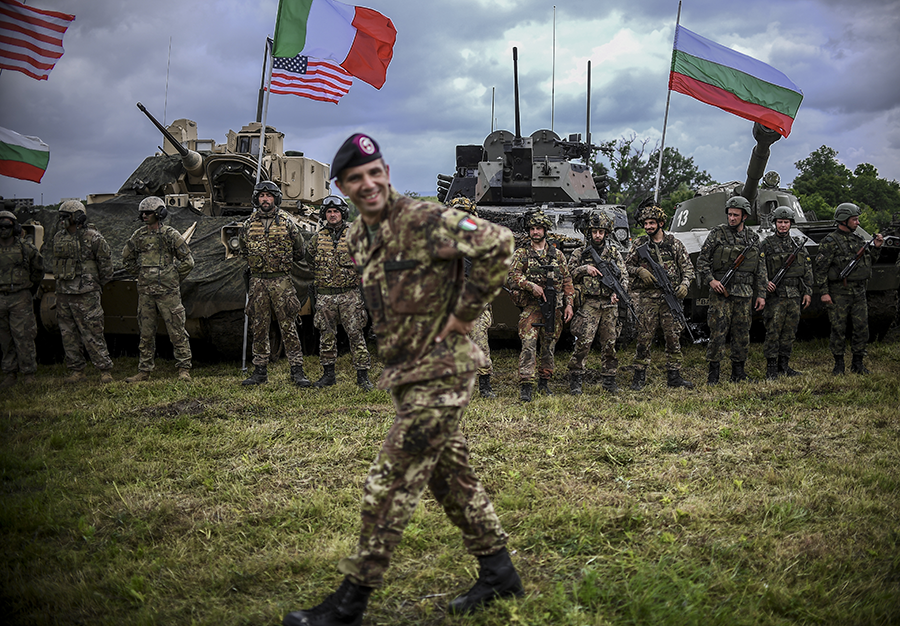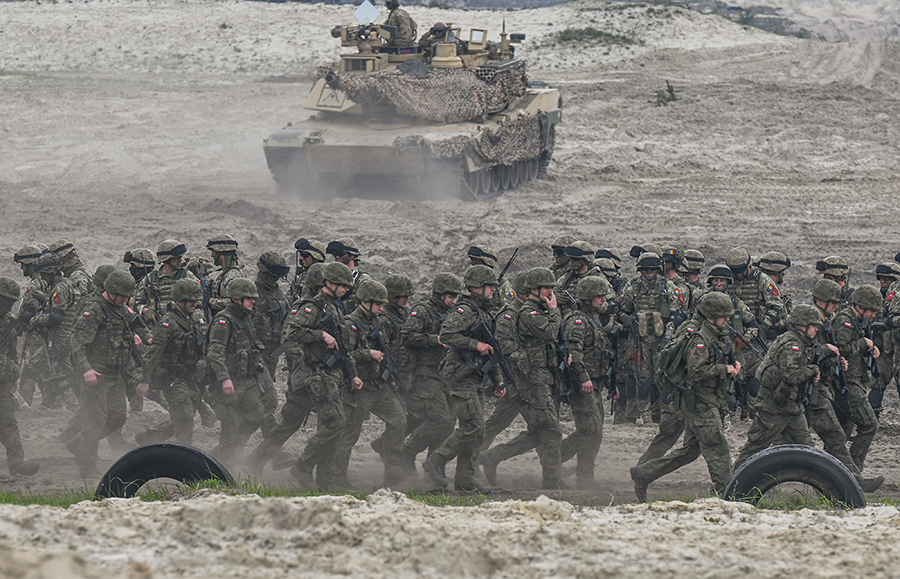For Immediate Release: Dec. 8, 2023
Media Contacts: Daryl G. Kimball, executive director, (202) 463-8270 ext. 107; Tony Fleming, director for communications, (202) 463-8270 ext. 110
(Washington, D.C.)—Since 2007, the independent, nongovernmental Arms Control Association has nominated individuals and institutions that have, in the previous 12 months, advanced effective arms control, nonproliferation, and disarmament solutions and raised awareness of the threats and the human impacts posed by mass casualty weapons.
"In a field that is often focused on grave threats and negative developments, our Arms Control Person(s) of the Year contest aims to highlight several positive initiatives—some at the grassroots level, some on the international scale—designed to advance disarmament, nuclear security, and international peace, security, and justice," noted Daryl G. Kimball, executive director.
"These nominees and their outstanding efforts during the past year illustrate how many different people can, in a variety of creative and sometimes courageous ways, contribute to a safer world for the generations of today and tomorrow," he added.
This year's nominees are listed below and a link to the ballot is available at ArmsControl.org/ACPOY.
Voting will take place between Dec. 8, 2023, and Jan. 11, 2024. The results will be announced Jan. 12, 2024. Follow the discussion on social media using the hashtag #ACPOY2023.
A full list of previous winners is available at ArmsControl.org/ACPOY/previous.
The 2023 nominees are:
- Prime Minister Fumio Kishida of Japan for his government's decision to host the May 2023 Summit of the G-7 Leaders in Hiroshima, which focused international attention on the growing risks of nuclear weapons and the special responsibilities of the leaders of nuclear-armed states and their allies to reduce nuclear risk and advance nuclear disarmament, and for Japan's $20 million contribution to a fund establishing Japan Chairs at overseas research institutions and think tanks focused on achieving a world without nuclear weapons.
- Amb. Leonardo Bencini, Ambassador, Permanent Representative of Italy to the Conference on Disarmament and President of the ninth Biological Weapons Convention (BWC) Review Conference for succeeding in establishing its first working group to “identify, examine and develop specific and effective measures, including possible legally-binding measures, and making recommendations to strengthen and institutionalize the Convention.”
- Christopher Nolan, director and writer of the film biopic Oppenheimer, which introduced an entirely new generation to the complex history and unique horrors of nuclear weapons and reminded earlier generations that nuclear weapons and nuclear war still pose an existential threat to us all.
- The leaders of several grassroots organizations—including Just Moms STL, the Navajo Uranium Radiation Victims Committee, and the Tularosa Basin Downwinders Consortium, among others—for successfully winning bipartisan support in the Senate to extend the Radiation Exposure Compensation Act (RECA) and recognize the health claims of the downwinders of the first U.S. nuclear test in New Mexico and other affected communities in Arizona, Colorado, Guam, Idaho, Montana, Nevada, New Mexico, and Utah, and residents living near formerly utilized Cold War-era nuclear weapons production sites in Missouri.
- IAEA Support and Assistance Mission to Zaporizhzhya (ISAMZ) for monitoring the safety and security of the Zaporizhzhia nuclear power plant during wartime and reporting on the IAEA Director General's five principles for preventing a nuclear accident and ensuring the integrity of the power plant. Over the past year, nearly a dozen teams of IAEA experts have rotated into the war zone surrounding Zaporizhzhia Nuclear Power Plant to keep the facility operating safely under the most difficult circumstances.
- Sviatlana Tsikhanouskaya, head of the United Transitional Cabinet and leader of democratic forces of Belarus, for steadfast opposition to Russian President Vladimir Putin's plan to deploy nuclear weapons in Belarus as a dangerous escalation of nuclear brinkmanship and a violation of the country’s nuclear-free status, which was established by the Declaration of State Sovereignty of Belarus of 1990, as well as the in the country’s 1994 constitution.
- Workers and technicians at the U.S. Army’s Pueblo Chemical Depot in Colorado and Blue Grass Army Depot in Kentucky for successfully and safely completing the dangerous job of eliminating the last vestiges of the United States' once-enormous declared stockpile of lethal chemical munitions as required by the 1997 Chemical Weapons Convention. Under the supervision of U.S. Army's office of Assembled Chemical Weapons Alternatives, the last mustard gas munition was destroyed in June at Pueblo; Blue Grass destroyed the last missile loaded with Sarin nerve agent in July. The elimination program cost an estimated $13.5 billion.
- The governments of Bulgaria, Slovakia, South Africa, and Peru which will have by the end of 2023 all completed their yearslong processes to destroy their stockpiled cluster munitions as mandated by the 2008 Convention on Cluster Munitions, to which 112 countries are party.
- The governments of Austria and 27 co-sponsoring states for introducing and securing approval of resolution L.56 at the UN First Committee. It is the first-ever resolution on lethal autonomous weapons systems (LAWS) and it indicates growing support for progress toward a binding international legal instrument regulating LAWS. The resolution, which was approved by a vote of 164-5-8, calls for UN secretary-general António Guterres to seek the views of member states on “ways to address the related challenges and concerns they raise from humanitarian, legal, security, technological and ethical perspectives and on the role of humans in the use of force.” Guterres and ICRC president Mirjana Spoljaric issued a joint call urging world leaders to launch negotiations on a new legally binding instrument to set clear prohibitions and restrictions for LAWS and to conclude these negotiations by 2026.





 “The Day After,” shown on the ABC television network, took viewers into the lives of characters in typical towns and cities in the midwestern United States, not far from U.S. nuclear-armed intercontinental ballistic missile (ICBM) silos. Following a fictional NATO-Russia military confrontation that spun out of control, the film showed the shocking effects of an all-out nuclear exchange designed to hit “military and related-industrial targets” and the catastrophic aftermath.
“The Day After,” shown on the ABC television network, took viewers into the lives of characters in typical towns and cities in the midwestern United States, not far from U.S. nuclear-armed intercontinental ballistic missile (ICBM) silos. Following a fictional NATO-Russia military confrontation that spun out of control, the film showed the shocking effects of an all-out nuclear exchange designed to hit “military and related-industrial targets” and the catastrophic aftermath. The North Atlantic Council, the alliance’s principal political decision-making body, announced the decision Nov. 7, stating that the allies “will suspend the operation of their obligations to the treaty” effective Dec. 7.
The North Atlantic Council, the alliance’s principal political decision-making body, announced the decision Nov. 7, stating that the allies “will suspend the operation of their obligations to the treaty” effective Dec. 7. Russia’s full-scale invasion of Ukraine in 2022, its withdrawal from the CFE Treaty, and now the decision by NATO states to suspend participation in the accord puts the conventional arms control system in Europe, which was painstakingly built over decades, into near total collapse.
Russia’s full-scale invasion of Ukraine in 2022, its withdrawal from the CFE Treaty, and now the decision by NATO states to suspend participation in the accord puts the conventional arms control system in Europe, which was painstakingly built over decades, into near total collapse.